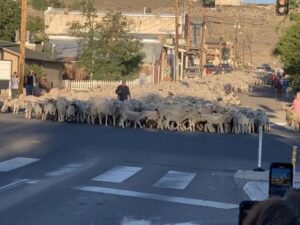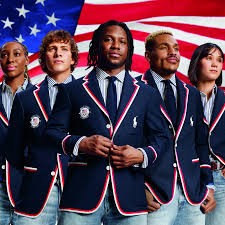Field to Fiber:
Historical Sheep Making Contemporary History
Cathy Koos and Janice Johnson
Imagine, if you will, waking up one fine June morning to the “tik-tik-tik” sound of hundreds of sheep strolling down Main Street. If you live outside Carson City in Dayton, Nevada, this is your annual June 1 treat as the Borda family herds their sheep from winter pastures near the Pine Nut mountains to summer grazing the lofty heights of the Sierra near Sonora Pass. With their shepherd and dogs walking alongside them, this herd will follow the grass until late autumn, following a circular route beginning with lambing in March, then shearing. Once the lambs are big enough to go with their mothers, they will graze their way through the summer.

Borda sheep crossing US 50, CarsonNow.org
An ancient people, speaking a prehistoric language. As part of the Basque tradition, the Borda family has been raising sheep for both the wool and meat markets in the Carson Valley since 1914 when their great grandfather Raymond migrated to this high desert region from Nafarroa Biddarrai in the Pyrenees alps of Europe.
Once numbering half a million sheep and one hundred operators in 1890, today’s herd numbers four thousand and one operating family, the Borda’s.
Concentrating on Merino and Ramboiullet breeds, the Borda’s have the best of both worlds: fine wool for the garment industry as well as meat for the table. And these garments are what brings me to today’s historical moment.
Earlier this week, wool from these very sheep sailed down the Seine River in Paris as blazers designed by Ralph Lauren and worn by our US Olympic Team. Truly a Field to Fiber to Field accomplishment.

New York Times, Ralph Lauren/ cc
Stay tuned for an update in the November issue of CNCHnet Journal when we join the herd for a stroll baaaaack to town
References
The Borda Family, Nevada
The Last Sheepherders, Katherine Fulwilder, ttps://youtu.be/ljnDxDEdOZw?si=VkMp5WTyVDWnuOE2
CarsonNow.org
Shaniko Wool, Shaniko, Oregon